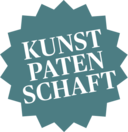Helm: All'antica-Sturmhaube, sog. Löwen-Sturmhaube
um 1550 - 1555, Besitzer: Kaiser Karl V. Sohn des Philipp von Habsburg
All'antica-Sturmhaube, sog. Löwen-Sturmhaube
In the sixteenth century, burgonets with Classicising mask visors were called alla romana antica, that is helmets in the ancient Roman manner. They reflect themes from Classical antiquity, allowing their wearer to assume the role of a celebrated ancient ruler or hero.
By donning this burgonet, the wearer assumed the role of Hercules, the personification of prowess and valour. The visor, shaped like the head of the lion of Cithaeron that Hercules slew, clearly references the demi-god, which is why the helmet has traditionally been attributed to Emperor Charles V, who felt a deep affinity with this hero from Classical mythology.
The lion burgonet comprises ten parts: a skull, a forehead-piece, a visor, a tripartite neck protection, and a pair of bipartite cheek guards. The comb is decorated with fighting tritons. The sides of the skull feature Siren-like figures flanked by the personifications of victory (right) and fame (left). Each cheek guard features a winged putto clutching, respectively, a trident and a sail. The visor has no eye slits, which means it can only be worn cocked back. It is fixed with a hinged bar to an eyelet on the forehead-piece. The holes drilled into the helmet along the comb for plumes of feathers also suggest it was intended solely to be worn on festive or ceremonial occasions.
The helmet entered the collection of Archduke Ferdinand II in the 1560s, if not earlier. Around 1560, he ordered the so-called ‘German Armour’ (Deutsche Rüstung; inv. A 693) from a workshop in Prague to wear with this helmet. A number of portraits painted in the 1560–70s show Ferdinand in this armour with the lion burgonet, for instance an engraving by Francesco Terzio in Imagines Gentis Austriacae (1569), a fresco in the Spanish Hall at Ambras Castle (c.1575), and a painting now in the Picture Gallery of the Kunsthistorisches Museum Vienna (inv. 8049).
Objektdaten
Objektbezeichnung
Helm
Kultur
Mailand
Datierung
um 1550 - 1555
Besitzer
Kaiser Karl V. Sohn des Philipp von Habsburg (1500 - 1558) - GND
Material/Technik
Eisen, geschmiedet, getrieben, teils ziseliert, teils geschwärzt, teils gebläut, teils mit Gold und Silber tauschiert. Leder.
Maße
H 40 cm x B 20 cm x T 38 cm
Gewicht 3,35 kg
Beschriftung
VICTOR DO
CAROLO VIMSA D
FE. D. ALP FVD
???S?? ?S??? ???/ ?????
SCIPIO AEMIL. APHRICANVS / D.(ivus) IVLIVS CAE. IMP. P.(ontifex) M.(aximus) / D. AVGVSTVS CAE. IMP. / TI. CLAVDIVS CAE. AUG. IMP.
Bildrecht
Kunsthistorisches Museum Wien, Hofjagd- und Rüstkammer
Inv. Nr.
Hofjagd- und Rüstkammer, A 693d
IGS - All'antica-Sturmhaube, sog. Löwen-Sturmhaube
OESG - All'antica-Sturmhaube, sog. Löwen-Sturmhaube
Permalink (zitierbarer Link) zu dieser Seite: www.khm.at/de/object/373118/
Kunst & Patenschaft
Viele unserer Objekte sind auf der Suche nach Paten. Mit einer Kunstpatenschaft tragen Sie dazu bei, die Schätze der Kunstgeschichte für die Zukunft zu bewahren.
Als Kunstpate fördern Sie mit Ihrer Spende direkt und nachhaltig die wissenschaftliche Dokumentation, Erforschung, Restaurierung und Präsentation der Kunstbestände des Kunsthistorischen Museums Wien.

